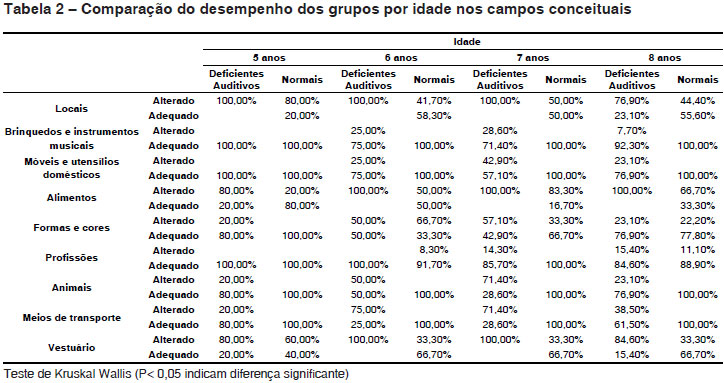PURPOSE: to investigate the performance of deaf children users of the Brazilian Language of Signs in expressive vocabulary test. METHOD: the sample was composed by 64 subjects (32 children in the study group and 32 in the control group) that were divided in 4 groups by age (5, 6, 7 and 8-year old). All children were submitted to the Language Test for Young Children ABFW - Vocabulary. The answers were classified in designation of the usual word (DVU), no-designation (ND) and substitution process (PS), in agreement with the author’s of the test proposal. RESULTS: in most of the conceptual fields, the hearing loss group obtained worse performance in relation to the control group. It was verified that in both studied groups, the worst performance took place in the categories: places, food and clothes, in all ages. In both groups better performance was verified in the 5 year-old children, in comparison to the other children. Also in both studied groups, the substitution processes were observed with larger frequency in the field places and with smaller frequency in shapes and colors. There was no significant difference among the ages. CONCLUSION: the conceptual fields with higher success indexes in the deaf children users of the Brazilian Language of Signs were professions, toys and musical instruments and furniture and domestic utensils. In spite of the quantitative differences observed in relation to the groups, great qualitative similarity was observed in relation to the obtained answers, suggesting a similar evolutionary process in the lexical acquisition of the groups.
Child Language; Hearing Loss; Vocabulary; Sign Language



